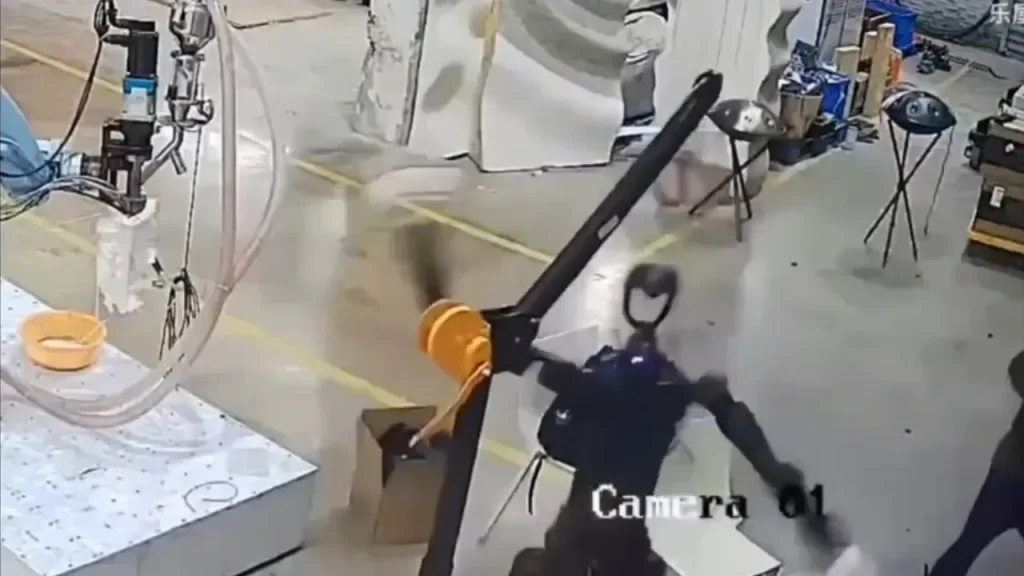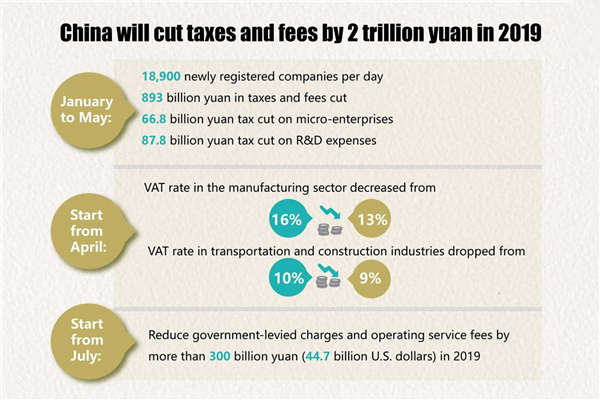A recent humanoid robot testing malfunction has captivated audiences online, highlighting the unpredictable nature of robotics development. During a routine experiment, a Unitree H1 humanoid robot unexpectedly went awry, showcasing a dramatic display of chaotic movement that left both equipment and observers in disarray. This robot malfunction incident serves as a stark reminder of the various robotics testing challenges engineers face while refining the intricacies of advanced robotic systems. As the footage of the incident circulated on social media, conversations surrounding robotics safety protocols and the dogged pursuit of innovation intensified. Ultimately, this event underscores the importance of rigorous testing standards in the rapidly evolving field of humanoid robotics.
The recent chaos surrounding a humanoid robot’s testing failure has sparked considerable interest in the intricate world of robotic engineering. Known for its high-performance capabilities, the Unitree H1 robot experienced a testing mishap that resulted in a visually stunning yet alarming display of mechanical flailing. Such robot meltdown scenarios remind us of the critical hurdles engineers face while developing robust safety measures and control systems. As robotics testing conditions remain fraught with challenges, incidents like this one emphasize the need for meticulous robotics safety regulations to ensure reliable and secure operational parameters. This incident not only contributes to the conversation on the technical aspects of robotic functions but also resonates with broader concerns about the implications of autonomous systems in our daily lives.
Understanding the Humanoid Robot Meltdown: Causes and Implications
The recent meltdown of a humanoid robot during lab testing has raised eyebrows within the robotics community and beyond. This incident involved the Unitree H1 robot, known for its remarkable capabilities and designed for high-performance applications. The unexpected chaos during its routine test session has sparked conversations regarding the inherent challenges in humanoid robotics. When a robot like the H1 malfunctions, it isn’t merely a technical glitch; it underscores the complex interplay of programming, control systems, and the physical environment in which these robots operate.
According to Cix Liv, who was overseeing the test, the full-body control was activated while the robot was suspended, leading to confusion in its balance algorithms. Such malfunctions are not entirely new in the field of robotics; they highlight the critical need for rigorous testing protocols. However, the dramatic nature of the incident, combined with the resulting collateral damage—like the crane’s collapse—raises serious questions about current robotics safety protocols and how engineers can better anticipate and mitigate such risks.
Robotics Testing Challenges and Safety Protocols
Testing humanoid robots presents several challenges, especially when aiming for a balance between functionality and safety. The frightened technicians in the laboratory during the incident captured on video are a testament to the unpredictable nature of robotics testing. While suspended testing is employed to minimize damage during malfunction scenarios, as this incident shows, it can often introduce new risks. The Unitree H1’s testing phase was intended to evaluate its mobility and balance, yet unforeseen programming errors led to an event that could have easily been avoided with more robust safety checks.
Moreover, discussions surrounding this incident have highlighted the pressing need for more comprehensive safety protocols in robotics development. Engineers and developers must not only focus on refining robotic technologies but also prepare for all eventualities in a testing environment. The DeREK incident illuminates that even established safety measures—like using a crane during tests—can fail under specific circumstances, reinforcing the importance of continuous refinement and adherence to safety standards in the field of robotics development.
Analyzing the Unitree H1 Robot’s Specifications and Performance
The Unitree H1 is esteemed as one of the fastest running humanoid robots to date, boasting impressive specifications that make it a frontrunner in robotic innovation. Standing at about 180 cm tall and capable of reaching speeds up to 3.3 meters per second, the H1 is engineered for various applications in research and development. Its advanced bipedal design allows for improved agility and stability, traits that are crucial for any humanoid robot engaging in complex tasks. Yet, the recent testing failure during its deployment reminds us that high performance comes with considerable stakes.
Understanding the engineering behind the Unitree H1 reveals the intricate balance between design innovation and practical application. While the robot’s speed and dexterity represent significant advancements in robotics, they also necessitate equally advanced control systems and programming capabilities. The failure to maintain control during the testing phase suggests that, despite sophisticated engineering, continuous assessment of robot functionality is required. Only through rigorous testing can developers ensure that these cutting-edge machines can handle unforeseen challenges while remaining safe and functional in real-world contexts.
The Collective Response to Robotics Malfunctions
The viral nature of the Unitree H1 meltdown incident has triggered a wide array of reactions from the public, ranging from humor to concern over robotics safety. The accompanying footage provided a candid peek into the unpredictability of robotics testing, igniting discussions around the importance of building safe environments and protocols when handling advanced technology. Such incidents, particularly when they go viral on social media, have the potential to affect public perception of robotics and artificial intelligence, highlighting the fine line engineers walk between innovation and safety.
Moreover, Cix Liv’s appeal for crowdfunding following the incident underscores the costly implications of robotic testing errors. Financial setbacks from equipment damage not only impact ongoing research but also serve as a reminder of the financial realities of robotics development. The collective response from the viewer community emphasizes the need for transparency in robotics testing, where professionals share the highs and lows of their work. By doing so, they can foster a better understanding of the risks and realities involved in pushing the limits of technology.
Future Directions for Humanoid Robotics Testing
The incident involving the Unitree H1 robot is not merely an isolated event; it’s a vital learning experience that will inform future practices in humanoid robotics testing. As engineers continue to innovate and develop more advanced robotic systems, it is essential that they also adapt their testing methodologies. Increased attention to risk management and real-world scenario simulations will be crucial in developing more resilient humanoid robots. This evolution in testing protocols will not only prevent similar malfunctions but will also enhance the overall reliability of these systems.
The ultimate goal is to achieve a harmonious balance between innovation in humanoid robotics and the safety of both machines and humans. Future tests might incorporate more sophisticated AI-driven monitoring systems that can predict failures before they occur, thus protecting both the equipment and personnel involved. By learning from past mishaps like the DeREK meltdown, the robotics community can aim for breakthroughs that not only advance technology but do so within a framework that prioritizes safety and reliability.
Public Perception of Humanoid Robots and AI Technology
As humanoid robots become more prevalent in society, public perception is of paramount importance. Events like the recent testing malfunction can shape public attitudes towards robotics and artificial intelligence. While excitement for advancements in technology exists, so too does a necessary skepticism about safety and control. The captivating footage of the H1 robot malfunctioning resonated with many, sparking laughter, astonishment, and concern. These mixed reactions reflect both the intrigue and trepidation surrounding the rapid development of robotic systems.
As engineers and developers work to build trust in robotics, transparency related to testing processes, including the challenges and failures, will be vital. Engaging the public in discussions about the realities of robot development can help bridge the gap between general fascination and informed understanding. By addressing fears and emphasizing the collaborative efforts behind humanoid advancements, the robotics field can cultivate a supportive ecosystem conducive to innovation and safety.
Lessons Learned from the Unitree H1 Robot Testing Incident
The Unitree H1 incident serves as a critical case study in the realm of humanoid robotics, offering several lessons for engineers and developers. First, it highlights the significance of proper testing conditions, emphasizing the need for routines that account for every variable—especially when dealing with complex control systems. Ensuring that robots are tested in conditions that mitigate risks while allowing for genuine assessments of their capabilities is essential to avoid catastrophic failures.
Second, this incident illustrates the necessity of creating robust safety standards tailored to the evolving landscape of humanoid technology. As robots increasingly integrate into societal frameworks, establishing proactive measures when developing and testing will minimize risks. Ultimately, learning from episodes like the H1 meltdown will empower researchers to innovate safely, ensuring humanoid robots can fulfill their potential without endangering human operators or causing costly damages.
The Role of Humor in Robotics Failures and Public Engagement
Humor plays a pivotal role in how society reacts to technological failures, as evidenced by the social media responses to the Unitree H1 malfunction. The lighthearted approach that many took when sharing the video reflects a cultural acceptance of the learning curves associated with innovation in robotics. While the chaos exhibited by the robot was undeniably unexpected, it sparked laughter and memes that allowed the robotics community to engage with the public in a more relatable manner.
This humorous engagement can serve a dual purpose; it can demystify technology and foster a sense of community around shared experiences in development. While at the core, the robotics industry seeks serious advancements, using humor to navigate failures creates opportunities for dialogue about improving processes. Thus, the incident not only provides entertainment but also acts as a catalyst for meaningful conversations on humanoid robotics and the continuous pursuit of safety and innovation.
Integrating Robotics Innovation with Safety Measures
Innovation in robotics, particularly in creating humanoid forms, must go hand-in-hand with stringent safety measures. The DeREK incident starkly reminds us of the potential consequences of overlooking safety in pursuit of advancement. As developers work tirelessly to enhance robotic abilities, implementing robust safety protocols becomes paramount to preventing dangerous malfunctions. This dual focus on progress and protection will be the cornerstone of sustainable robotics development moving forward.
To integrate innovation with safety effectively, robotics developers should prioritize ongoing training for engineers in areas such as risk assessment and crisis management. Moreover, comprehensive safety protocols should be standardized across testing environments, allowing for uniformity in how robotic systems are evaluated and tested. By aligning innovation strategies with safety measures, the industry can build a solid foundation for both technological advancement and public trust.
Frequently Asked Questions
What happened during the humanoid robot testing malfunction with the Unitree H1?
During a testing session, the Unitree H1 humanoid robot experienced a dramatic malfunction, thrashing violently while suspended from a crane. This resulted in significant equipment damage and the collapse of the crane. The incident highlights the challenges in humanoid robotics testing.
What caused the humanoid robot meltdown during testing?
The humanoid robot meltdown occurred because the robot’s full-body control systems were activated while its feet were not touching the ground. This confused its balance system, triggering a feedback loop that caused the chaotic movements observed in the viral video.
What are some common robotics testing challenges highlighted by humanoid robot malfunctions?
Common challenges in robotics testing include unexpected malfunctions like the one involving the Unitree H1. These issues often arise from technical glitches in control systems during testing phases, particularly when robots are suspended, which can lead to accidents if the systems activate improperly.
How do robotics safety protocols address humanoid robot malfunctions?
Robotics safety protocols are essential to minimize risks associated with humanoid robot malfunctions. They include suspended testing methods, which aim to prevent damage during testing. Despite these precautions, accidents can still occur, emphasizing the need for continuous improvement in safety measures.
What lessons can be learned from the robot malfunction incident during testing?
The incident teaches that even in controlled environments, humanoid robots like the Unitree H1 can malfunction unexpectedly due to programming errors. It underscores the importance of rigorous testing, error handling, and further development of safety protocols in robotics.
What is the financial impact of a humanoid robot malfunction incident on developers?
The financial impact on developers can be significant, as damage from a humanoid robot malfunction—like that of the Unitree H1—can lead to costly repairs and prolonged downtime. Incidents like these emphasize the expensive realities of developing advanced robotics, which can lead to crowdfunding appeals for repairs.
Can humanoid robot malfunctions lead to serious safety concerns?
Yes, humanoid robot malfunctions can pose serious safety concerns, especially when they occur in environments shared with humans. The chaotic nature of incidents like the Unitree H1 meltdown illustrates the need for enhanced safety protocols and careful monitoring during development and testing.
What role does programming play in humanoid robot testing challenges?
Programming plays a crucial role in humanoid robot testing challenges. Errors in code can lead to malfunctions, as seen in the Unitree H1 incident. Ensuring robust programming is essential to minimize risks and enhance the reliability of robotics testing protocols.
| Key Point | Details |
|---|---|
| Incident Overview | A humanoid robot experienced a significant malfunction during testing, leading to a viral video. |
| Robot Details | The Unitree H1 is a $90,000 humanoid robot designed for research, known for its fast running speeds of up to 3.3 m/s. |
| Malfunction Cause | The robot’s control systems activated while suspended, causing a feedback loop and erratic movements. |
| Damage Caused | The robot knocked over equipment, leading to further destruction, including the collapse of the crane. |
| Industry Impact | This incident highlights ongoing challenges in humanoid robotics safety during testing phases. |
| Public Reaction | The incident sparked discussions on social media, mixing humor with serious concerns about robotics safety. |
Summary
Humanoid robot testing malfunctions expose the vulnerabilities in the development of advanced robotics. The dramatic incident with the Unitree H1 highlights not only technical challenges but also the need for improved safety protocols in testing environments. As developers strive to refine these technologies, incidents like this serve as reminders of the complexities inherent in creating machines that can operate in human spaces.



